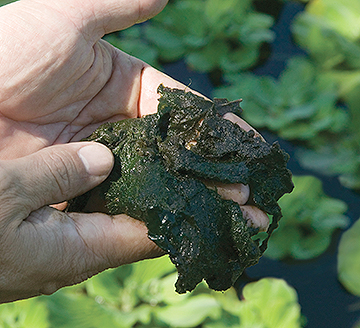Algae in a pond can be a common problem for pond owners, but with the right strategies, you can effectively control and manage algae growth. Algae are tiny aquatic plants that thrive in water with high nutrient levels and sunlight. Excessive algae growth can make your pond water green, murky, and unattractive, affecting the overall health of your pond ecosystem. Here are some effective ways to control algae in a pond:

Credit: www.tetra-fish.com
1. Maintain Good Water Quality
Regularly test your pond water for pH, ammonia, nitrites, and nitrates to ensure optimal water quality. High nutrient levels can promote algae growth. Keep the water balanced and well-oxygenated to create an environment that is less favorable for algae.
2. Provide Sufficient Aeration
Aerating your pond can help disrupt algae growth by increasing oxygen levels in the water. Installing a fountain, waterfall, or aerator can promote water circulation and prevent stagnant areas where algae tend to thrive.
3. Add Aquatic Plants
Introducing aquatic plants like water lilies, water hyacinth, and water lettuce can help shade the water’s surface, reducing sunlight penetration and inhibiting algae growth. Plants also compete with algae for nutrients, helping to naturally control their population.

Credit: m.youtube.com
4. Use Barley Straw
Barley straw is a natural and effective way to control algae in ponds. When barley straw decomposes in water, it releases compounds that inhibit algae growth. Place barley straw bales or pellets in your pond to help prevent algae blooms.
5. Limit Nutrient Input
Reduce the amount of organic matter entering your pond, such as leaves, grass clippings, and excess fish food. Organic debris decomposes in water, releasing nutrients that can fuel algae growth. Regularly remove debris and maintain good pond hygiene.
6. Use Algaecides
If algae growth becomes excessive, consider using algaecides to control the population. Algaecides are chemicals designed to kill algae and can be effective in reducing algae blooms. However, use algaecides sparingly and according to the manufacturer’s instructions to avoid harming other aquatic life.
7. Install a UV Clarifier
A UV clarifier uses ultraviolet light to kill algae cells and inhibit their growth. Installing a UV clarifier in your pond can help maintain water clarity and reduce algae populations. Regular maintenance and cleaning of the UV clarifier are essential for optimal performance.
8. Control Fish Population
Overstocking your pond with fish can lead to excess fish waste, which can contribute to nutrient buildup and algae growth. Monitor and control the fish population in your pond to maintain a balanced ecosystem and prevent nutrient imbalances.
9. Regular Maintenance
Consistent pond maintenance is key to preventing algae growth. Remove excess algae manually, clean filters, and perform water changes as needed to keep your pond in top condition. Regular monitoring and maintenance will help you stay ahead of algae problems.
10. Seek Professional Advice
If you’re struggling to control algae in your pond despite your best efforts, consider seeking advice from a pond professional or specialist. They can assess your pond’s specific conditions and provide tailored recommendations to effectively manage algae growth.
By implementing these strategies and staying proactive in managing your pond’s health, you can effectively control algae growth and maintain a beautiful and balanced pond ecosystem. Remember that prevention is key when it comes to algae control, so start implementing these tips today to enjoy a clean and healthy pond.





